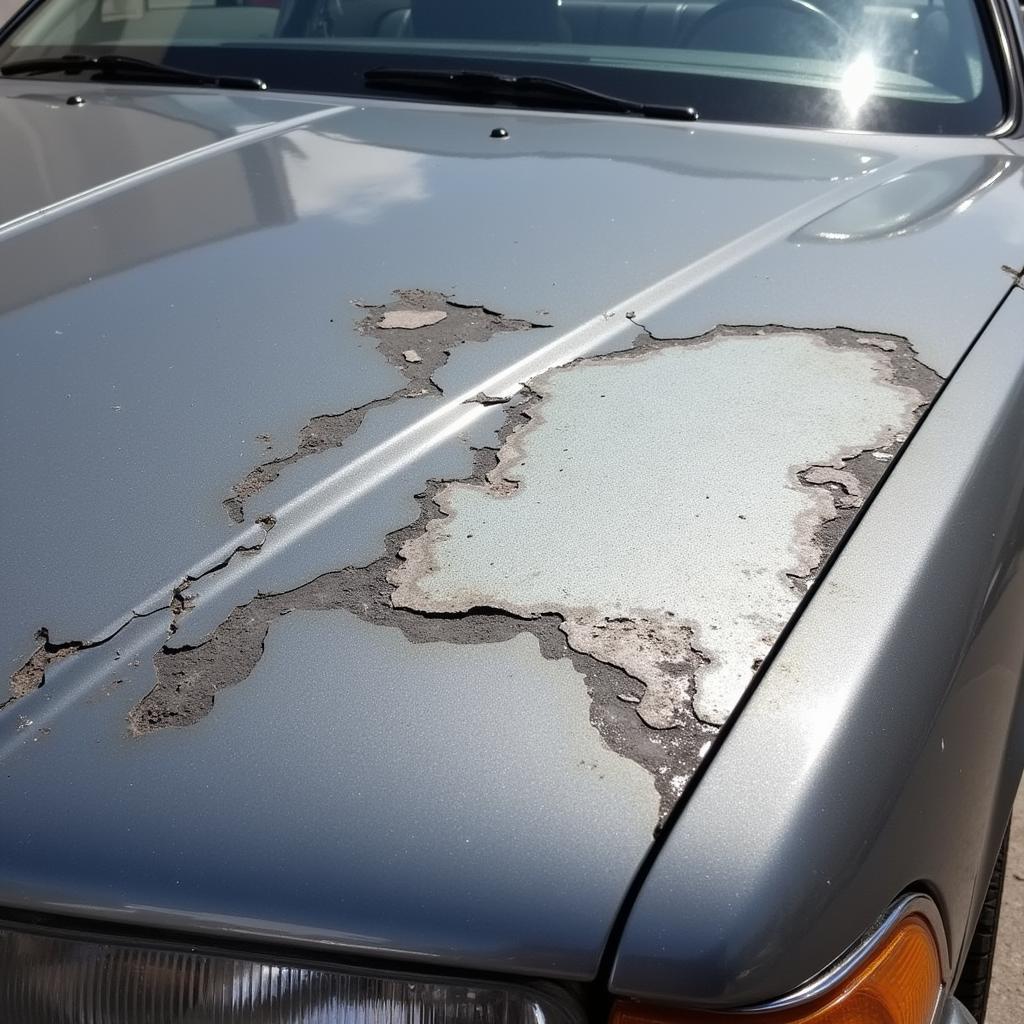Iron contamination is a common issue that can plague your car’s paint, leaving behind unsightly blemishes and potentially causing long-term damage. While washing your car regularly is important, it often isn’t enough to remove these stubborn iron particles. This is where a dedicated deironing treatment comes in.
Understanding Iron Contamination and Its Effects
Iron contamination comes from various sources, including brake dust, industrial fallout, and even rail dust. These tiny metallic particles become embedded in your car’s paintwork, creating small, rough spots that are often invisible to the naked eye. Over time, these particles oxidize or rust, leaving behind those telltale brown or orange spots that mar your car’s finish.
 Car Paint Damaged by Iron Fallout
Car Paint Damaged by Iron Fallout
But the damage goes beyond mere aesthetics. These embedded particles can penetrate the clear coat and reach the base coat, causing etching and potentially leading to more serious paint damage if left untreated.
The Importance of Deironing Your Car
Deironing is a specialized car detailing process that utilizes a pH-neutral, iron-removing solution to safely lift and dissolve these stubborn iron particles from your car’s paintwork. This process helps to:
- Restore your car’s shine: By removing the microscopic contaminants, deironing leaves your car’s paint feeling smooth and looking noticeably glossier.
- Prevent further damage: Removing iron particles before they have a chance to oxidize and cause further damage to the paintwork helps protect your car’s value and appearance in the long run.
- Enhance other detailing steps: Deironing creates a perfectly smooth surface, allowing for more effective polishing and waxing, leading to better and longer-lasting results.
When Should You Deiron Your Car?
Ideally, deironing should be incorporated into your regular car detailing routine. However, it’s especially crucial in the following scenarios:
- Before any paint correction: Iron particles can interfere with polishing, potentially causing more scratches. Deironing ensures a clean surface for optimal results.
- After a track day: Cars used on the track are exposed to significantly higher levels of brake dust and other metallic particles.
- If you live in an industrial area or near train tracks: These environments have higher concentrations of airborne contaminants that can settle on your car.
Conclusion
Deironing your car is an essential step in maintaining its appearance and protecting its value. While it might seem like an additional expense, the long-term benefits of preventing paint damage and preserving your car’s shine far outweigh the costs. By incorporating deironing into your car care routine, you can enjoy a vehicle that looks its best for years to come.

Leave a Reply